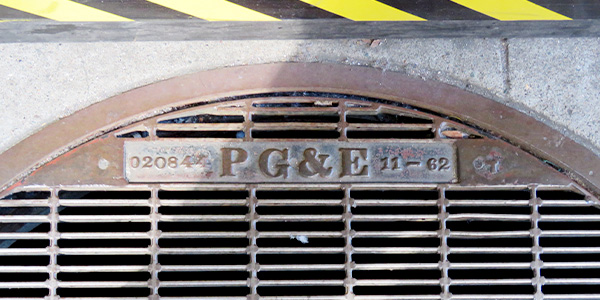By Hudson Sangree
The bankruptcy of Pacific Gas and Electric could reach another milestone this week as the utility tries to explain its Chapter 11 reorganization proposal in plain English to fire victims and other affected parties.
That reorganization plan is now estimated to cost almost $60 billion, according to recent testimony by PG&E executives before the California Public Utilities Commission.
In a hearing that starts Tuesday, lawyers will debate what’s known in bankruptcy court as a disclosure statement. Once finalized, the statement will be sent out to parties to the bankruptcy who will then get to vote on the plan. (See What Spring Could Bring for PG&E.)
Objections to PG&E’s disclosure statement have been filed by government agencies, fire victims, creditors and others who take issue with aspects of its Chapter 11 plan.
Wildfire victims, represented by the official Tort Claimants Committee, say the revised terms of PG&E’s exit financing could leave a proposed $13.5 billion victims’ trust holding company stock with diminished value.
The U.S. Trustee appointed to the case says the disclosure statement lacks supporting financial information necessary for parties to determine the merits of PG&E’s bankruptcy plan.
Both want U.S. Bankruptcy Judge Dennis Montali to help correct the purported problems.
Surprisingly, however, PG&E’s fiercest critic in recent months, Gov. Gavin Newsom, said he doesn’t want to stand in the way of the disclosure statement being mailed out, even though not all his demands for change have been met by the utility.
Newsom has threatened a state takeover of the company if it doesn’t replace its entire board of directors and make other wholesale changes. But the utility is trying to exit bankruptcy by June 30 so it can participate in a $21 billion wildfire insurance fund created by Assembly Bill 1054, passed last July, the governor’s lawyers noted in court papers filed Friday. (See Newsom Budget Reiterates PG&E Takeover Threat.)
The CPUC must rule on whether PG&E has met the terms of AB 1054 — including whether it can provide safe, reliable service going forward and fairly compensate victims of past fires, such the November 2018 Camp Fire that killed 86 people in the town of Paradise.
Newsom’s lawyers acknowledged PG&E’s Chapter 11 plan, as detailed in its draft disclosure statement, doesn’t fulfill the requirements of AB 1054, but they said it should be allowed to move forward toward a vote anyway.
“Under normal circumstances, it may be prudent for the debtors to delay solicitation until the plan can be further refined to meet AB 1054,” the governor’s attorneys said. “The governor’s office, however, is cognizant that the June 30, 2020, deadline codified in AB 1054 creates unusual tension in these Chapter 11 cases [so that delays could endanger] … the debtors’ ability to ultimately obtain the benefit of the provisions of AB 1054.”
Those financial benefits, insuring the state’s investor-owned utilities against future wildfire liabilities, are necessary for PG&E to remain financially stable going forward, the utility and governor agree.
“Modifications to the plan to resolve the concerns of the governor’s office should not jeopardize the confirmation process, as the governor believes those changes would create a stronger and better managed utility and inure to the benefit of all of the debtors’ constituents,” Newsom’s lawyers said.
The governor’s office has been working with PG&E to address Newsom’s concerns. The parties have engaged in court-ordered mediation and met together in the State Capitol.
A mediation session held Monday in San Francisco “to resolve all outstanding issues between the parties” could bring PG&E, fire victims and state officials closer together, shortening Tuesday’s hearing.
The disclosure hearing is scheduled to start at 10 a.m. before Montali in the U.S. Bankruptcy Court in San Francisco. It could continue into Wednesday if necessary, court papers indicate.




